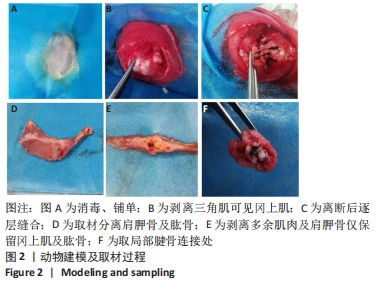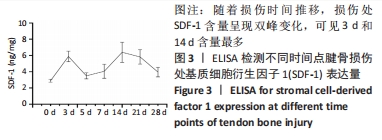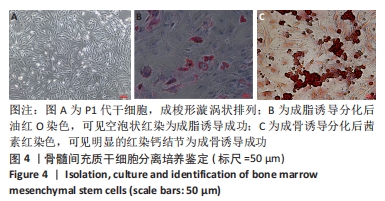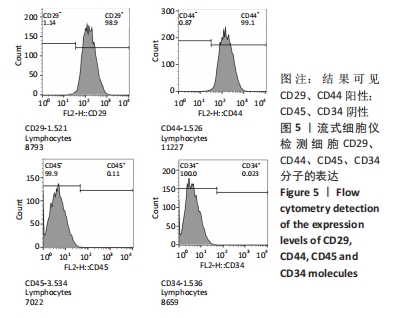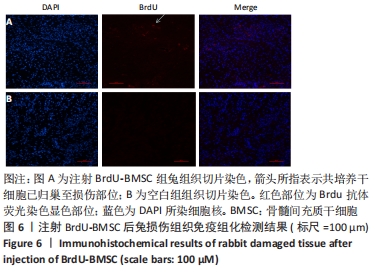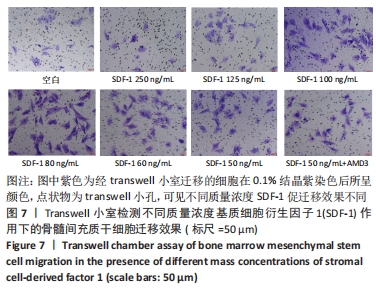[1] WANG HN, RONG X, YANG LM, et al. Advances in Stem Cell Therapies for Rotator Cuff Injuries. Front Bioeng Biotechnol. 2022;10:866195.
[2] BARBOSA F, TITCHENER A, TAMBE A, et al. Clinical Outcomes of Arthroscopic Revision Rotator Cuff Repair. Indian J Orthop. 2023;57:490-494.
[3] REES JL, CRAIG R, NAGRA N, et al. Serious adverse event rates and reoperation after arthroscopic shoulder surgery: population based cohort study. BMJ. 2022; 378:e069901.
[4] 刘俊,赵鑫,陈贝等.组织工程技术促进骨腱界面有序再生的应用展望[J].临床外科杂志,2021,29(4):393-396.
[5] YANG CH, TENG YJ, GENG B, et al. Strategies for promoting tendon-bone healing: Current status and prospects. Front Bioeng Biotechnol. 2023;11:1118468.
[6] BARBOSA F, TITCHENER A, TAMBE A, et al. Clinical Outcomes of Arthroscopic Revision Rotator Cuff Repair. Indian J Orthop. 2023;57:490-494.
[7] VOSS A, MCCARTHY MB, ALLEN D, et al. Fibrin scaffold asa carrier for mesenchymal stem cells and growth factorsin shoulder rotator cuff repair.Arthrosc Tech. 2016;5(3):e447-451.
[8] CHEN W, SUN Y, GU X, et al. Conditioned medium of hu-man bone marrow-derived stem cells promotes tendon-bone healing of the rotator cuff in a rat model. Biomaterials. 2021;271:120714.
[9] HUANG K, CHEN CA, DONG SK, et al. Differentiation Ability of Tendon-Derived Stem Cells and Histological Characteristics of Rotator Cuff Remnant on the Greater Tuberosity Degenerated with Age and Chronicity. Arthroscopy. 2022;38(4):1037-1048
[10] ZHANG J, LI B, WANG J. The role of engineered tendon matrix in the stemness of tendon stem cells in vitro and the promotion of tendon-like tissue formation in vivo. Biomaterials. 2011;32:6972-6981.
[11] ZHANG M, LIU H, CUI Q, et al. Tendon stem cell-derived exosomes regulate inflammation and promote the high-quality healing of injured tendon. Stem Cell Res Ther. 2020;11:402.
[12] VENTURA-JUNCÁ P, ERICES A, SANTOS MJ. Bioethical challenges of stem cell tourism. Rev Med Chil. 2013;141:1034-1040.
[13] TEICHER BA, FRICKER SP. CXCL12 (SDF-1)/CXCR4 path-way in cancer. Clin Cancer Res. 2010;16(11):2927.
[14] SADRI F, REZAEI Z, FEREIDOUNI M. The significance of the SDF-1/CXCR4 signaling pathway in the normal development. Mol Biol Rep. 2022;49:3307-3320.
[15] LI MZ, CHEN Y, HU JZ, et al. Sustained release of collagen-affinity SDF-1αfrom book-shaped acellular fibrocartilage scaffold enhanced bone-tendon healing in a rabbit model. J Orthop Res. 2021;39:1331-1343.
[16] TELLIER LE, KRIEGER JR, BRIMEYER AL, et al. Localized SDF-1α Delivery Increases Pro-Healing Bone Marrow-Derived Cells in the Supraspinatus Muscle Following Severe Rotator Cuff Injury. Regen Eng Transl Med. 2018;4:92-103.
[17] DOI N, IZAKI T, MIYAKE S,et al.Intraoperative evaluation of blood flow for soft tissues in orthopaedic surgery using indocyanine green fluorescence angiography: A pilot study. Bone Joint Res. 2019;8:118-125.
[18] ZHAO WL,YANG JW, KANG YH, et al. Animal Models of Rotator Cuff Injury and Repair: A Systematic Review. Tissue Eng Part B Rev. 2022;28:1258-1273.
[19] ROSSETTI L, KUNTZ LA, KUNOLD E ,et al. The microstructure and micromechanics of the tendon-bone insertion. Nat Mater. 2017;16:664-670.
[20] PENG Y,LI X,WU W, et al. Effect of Mechanical Stimulation Combined With Platelet-Rich Plasma on Healing of the Rotator Cuff in a Murine Model. Am J Sports Med. 2022;50(5):1358-1368.
[21] ZZHU M, LIN TM, LIM KS, et al. Novel Growth Factor Combination for Improving Rotator Cuff Repair: A Rat In Vivo Study. Am J Sports Med. 2022;50:1044-1053.
[22] KANG K, GENG Q, CUI LK, et al. Upregulation of Runt related transcription factor 1 (RUNX1) contributes to tendon-bone healing after anterior cruciate ligament reconstruction using bone mesenchymal stem cells. J Orthop Surg Res. 2022;17: 266.
[23] XU JJ, YE ZP, HAN K, et al. Infrapatellar Fat Pad Mesenchymal Stromal Cell-Derived Exosomes Accelerate Tendon-Bone Healing and Intra-articular Graft Remodeling After Anterior Cruciate Ligament Reconstruction. Am J Sports Med. 2022;50:662-673.
[24] ARVINIUS C, CIVANTOS A, RODRÍGUEZ-BOBADA C, et al. Enhancement of in vivo supraspinatus tendon-to-bone healing with an alginate-chitin scaffold and rhBMP-2. Injury. 2021;52:78-84.
[25] ATESOK K, FU FH, WOLF MR, et al. Augmentation of ten-don-to-bone healing.JBJS. 2014;96(6):513-521.
[26] 杨志峰,杨清玲,陈昌杰.趋化因子SDF-1与受体CXCR4的研究进展[J].分子诊断与治疗杂志,2011,3(1):58-61.
[27] ZHAO XB, ZHOU YY, LI JT, et al. Opportunities and challenges of hydrogel microspheres for tendon-bone healing after anterior cruciate ligament reconstruction.J Biomed Mater Res B Appl Biomater. 2022;110:289-301.
[28] POTTER ML, SMITH K, VYAVAHARE S, et al. Characterization of Differentially Expressed miRNAs by CXCL12/SDF-1 in Human Bone Marrow Stromal Cells.Biomol Concepts. 2021;12:132-143.
[29] OGLE ME, KRIEGER JR, TELLIER LE, et al. Dual Affinity Heparin-Based Hydrogels Achieve Pro-Regenerative Immunomodulation and Microvascular Remodeling.ACS Biomater Sci Eng. 2018;4:1241-1250.
[30] NISHIDA Y, HASHIMOTO Y, ORITA K, et al. Intra-Articular Injection of Stromal Cell-Derived Factor 1α Promotes Meniscal Healing via Macrophage and Mesenchymal Stem Cell Accumulation in a Rat Meniscal Defect Model. Int J Mol Sci. 2020;21(15):5454.
[31] XU X, ZHU F, ZHANG M, et al. Stromal Cell -derived factor -1 enhances wound healing through recruiting bone marrow-derived mesenchymal stem cells to the wound area and promoting neovascularization. Cells Tissues Organs. 2013;197(2):103-113.
[32] 李蕾,崔军,霍媛媛等.SDF-1在拔牙创软组织愈合过程中的表达及分布[J].上海口腔医学,2015,24(3):269-274.
[33] CERADINI DJ, KULKARNI AR, CALLAGHAN MJ ,et al. Progenitor cell trafficking is regulated by hypoxic gradi-ents through HIF-1 induction of SDF-1. Nat Med. 2004;10(8):858-864.
[34] LV KX, KONG LY, YANG M, et al. An ApoA-I Mimic Peptide of 4F Promotes SDF-1α Expression in Endothelial Cells Through PI3K/Akt/ERK/HIF-1α Signaling Pathway.Front Pharmacol. 2022;12:760908.
[35] ZHANG Y, ZHANG YY, PAN ZW, et al. GDF11 promotes wound healing in diabetic mice via stimulating HIF-1ɑ-VEGF/SDF-1ɑ-mediated endothelial progenitor cell mobilization and neovascularization. Acta Pharmacol Sin. 2023;44(5):999-1013.
[36] BAJDAK-RUSINEK K, FUS-KUJAWA A, BUSZMAN P, et al. SDF-1α-Releasing Microspheres Effectively Extend Stem Cell Homing after Myocardial Infarction.Biomedicines. 2023;11(2):343.
[37] LIU SH, PANOSSIAN V, AL-SHAIKH R, et al. Morphology and matrix composition during early tendon to bone healing. Clin Orthop Relat Res.1997;(339):253-260.
[38] YANG H, HE C, BI Y, et al. Synergistic effect of VEGF and SDF-1α in endothelial progenitor cells and vascular smooth muscle cells.Front Pharmacol. 2022;13: 914347.
[39] GARCÍA-CUESTA EM, SANTIAGO CA, Vallejo-Díaz J, et al. The Role of the CXCL12/CXCR4/ACKR3 Axis in Autoimmune Diseases. Front Endocrinol (Lausanne). 2019; 10:585.
[40] KIJOWSKI J, BAJ-KRZYWORZEKA M, MAJKA M, et al. The SDF-1-CXCR4 axis stimulates VEGF secretion and activates integrins but does not affect proliferation and survival in lymphohematopoietic cells. Stem Cells. 2001;19:453-466.
|

